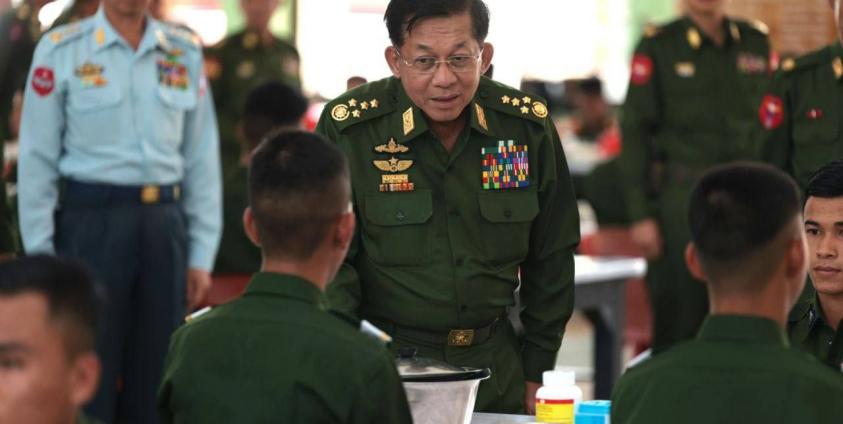As the year reaches its halfway point, local armed groups in the southern region of Myanmar have noticed a shift in the fighting tactics employed by the Military Council troops.
After the military coup, there were many different armed groups and EAOs forces fighting against the military dictatorship, which resulted in the Military Council opening multiple war fronts across the country that continue to this day.
The resistance of ethnic armed organizations (EAOs) and local defense forces has caused a change in the fighting approach over the two years since the coup. The proliferation of PDFs and the proliferation of frontlines caused the Junta ‘s forces to be increasingly stretched and forced to rely on under-sized battalions. This has resulted in the Junta adopting a more defensive strategy in certain regions.
In the southern regions of the country, including Karen State, Mon State, and Tanintharyi Region, the revolutionary forces' armed units have intensified their attacks on their enemy targets. In response the Military Council has escalated the use of artillery shells and airstrikes in these areas.
But so far the Military Council did not extend their airstrikes in Thaton district of Mon State, under the control of the Karen National Union (KNU). However, there have been instances of reconnaissance flights and flights observed around the camp in the area.
In the Karen State liberated areas controlled by the Karen National Union (KNU), the Military Council has seldom engaged in combat operations. Instead, it is the joint forces of the Karen National Liberation Army (KNLA) and local People's Defense Forces (PDF) who have increasingly carried out raids on military bases belonging to the Military Council. When the Military Council troops are unable to engage in ground combat, they rely on aerial bombardments and artillery shells as a response to raids on their military bases.
According to observers, the Military Council troops are stationed in strategically significant military bases and are actively preparing to employ artillery shells and air strikes in their efforts to overcome the revolutionary forces.
In Mon State, the Junta forces have engaged in arrests and killings of residents. Additionally, they have been launching artillery shells into villages and setting houses ablaze in Thaton, Kyaikto, Bilin, and Ye townships.
According to survey data, there were only 10 clashes between the Military Council troops and the local defense forces in Mon State during May. Additionally, incidents of frequent interceptions and attacks on Military Council convoys were reported.
The information officer from the Tanintharyi Region PDF stated, "In Tanintharyi, the regime’s
rear battalions and camps are being attacked, preventing them from prioritizing the front line. Additionally, the rear line remains on high alert. Continuous attacks on their rear battalions and camps in Tanintharyi are weakening them, making it harder for them to carry out combat operations. "
Observers note that during the current rainy season is not a good time for the regime to engage in offensive combat operations. However the exceptions the key strategic front-lines in the Sagaing Region and Karenni Region, where the intensity of the war is high and the Junta is putting a high priority onto hanging onto their bases.
On June 2, in Kyainseikgyi Township, Karen State, the Karen armed joint forces launched simultaneous attacks on several military installations and government offices where the Military Council is stationed. These targets included the township police station, Infantry Battalion 284, General Administration Department office, immigration office, communications office, tax office, and judge's office.
On June 3, the Special Operation Force (S.O.F.) announced that nearly 10 soldiers and policemen belonging to the Military Council were killed, and 15 others were injured as a result of the attack.
According to some officials responsible for the local defense forces, they estimate, the Military Council troops will initiate combat operations in areas where the revolutionary forces are relatively weaker, while focusing on fortifying their positions in areas where the revolutionary forces are stronger.
The National Unity Government (NUG) has declared the year 2023 as a crucial time that could determine the outcome of the revolution







